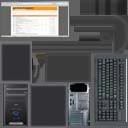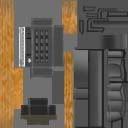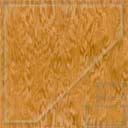The BRAWL² Tournament Challenge has been announced!
It starts May 12, and ends Oct 17. Let's see what you got!
https://polycount.com/discussion/237047/the-brawl²-tournament
It starts May 12, and ends Oct 17. Let's see what you got!
https://polycount.com/discussion/237047/the-brawl²-tournament
Prop modeling & texture
So I'm only allowed to use 128x128 texture maps and no lighting. Please feel free to critique or post here.










Replies
I think that table could have some baked AO or blured shadows since it uses its own texture sheet.
Also even it is a neutral lighting, table could have some vertex color work also to get some AO and basic shading.
Check
http://www.cgtextures.com/
under wood > Plywood New
LOL, an old roommate of mine made his desk, and it was made of plywood...he covered it though with some kind of wall paper...it was a big mofo.
The PC and chairs look good, though I reckon that for the legs and plastic bits, you could get away with just a few gradients and use a bit of clever uv map manipulation imo.
keep it going dude, some nice work being displayed there fella
When resolution is a problem, or props are meant to be small, less is often more.
Simplify the wood texture which will make the model less noisy and easier to read from distance.
Also, Since evrything seems to be custom textured, I wonder if you couldn't bake a simple ambient occlusion for the objects. The table especially would profit a lot from it.
Oh, and I have texture restrictions because my teacher claims that if we can make it look good at this size higher resolutions will be way easier.
but all in all its already pretty nice
i can't imagine that you'd have the poly budget to do ambient occlusion. if you did, you could use some flat polies with a flat black texture, that has an alpha gradient on it. that way you could slap it here and there and get some gradients...
"... my teacher claims that if we can make it look good at this size higher resolutions will be way easier."
ur teacher is right in the sense that the techniques are less complicated to teach and learn using lowpoly. understanding these essential foundational skills in this way is a stream-lined nutritional knowledge diet for a developing game artist. you'll be an overpaid game artist with an inflated ego, like me, in no time.
AO is very important part same as color etc.
As to me it is even essential especially for old school cause there is rare or no lighting on objects/characters.
Where it is possible to add it pays of by adding better shape feeling and definition to the object. It is easy to do with vertex color (and that's how it is usually done in lowpoly environments ) or/and in some parts of diffuse map where uv layout allows to.
anyways, Xen415, the desk now looks way better, good job.
I believe your texture should hold up without the need for ambient occlusion. Ive seen very often where an artist will paint a crappy texture and try to make it look better with AO.
But I don't believe its for pussies
Anyway...
I'd just bake the AO of the lowpoly itself, no need for a hipoly model. We were doing this 6 years ago for all the UT2003/UC meshes, works fine to give lowpoly objects a sense of depth making them a bit easier to read and helps the artist with figuring out where basic shadows should go.
Using it as a soft overlay to accentuate angles and depth is usually all it takes. It will NOT make crappy textures look good.
It should be very easy to bake the AO of the model itself into the UV, but how you do it depends of your 3d app of course. I'm sure someone can tell you how if they know what you're using.
Always paint tiny textures in real resolution and learn pixel art techniques, they work great for such textures. Pixelation forums are a good starting place: http://pixelation.wayofthepixel.net/